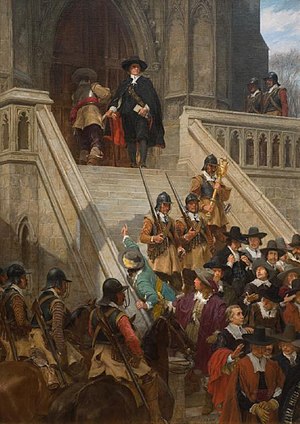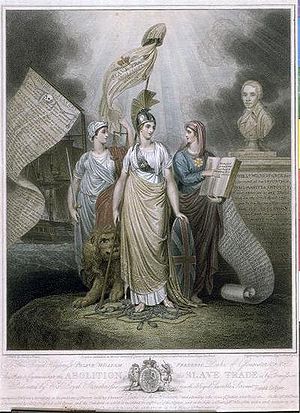As the sugar and tobacco trade developed in the West Indies, English plantation owners were in dire need of manual laborers to work in the fields and harvest the crops. The native Caribbean people had been suppressed, thus, planters were forced to look further afield for the needed workers.
Thus began the (often forced) migration of Irish and English workers to the island plantations of the West Indies. In the brief period between 1652 and 1659, tens of thousands of men, women and children were transported to British colonies in Antigua, Montserrat, Barbados, and other locations throughout the Caribbean Islands.
Some of the migrants were willing participants in the process, and worked as indentured servants on the island plantations. They sold their labor for periods of five to ten years, and in return received ownership of a small plot of land.
These indentured workers signed unique legal contracts. Terms of agreement were written up in duplicate on a single sheet of paper, and then cut with a jagged edge (thus, the term “indenture”). One half was given to the laborer and the other was held by the owner. At the end of the agreed-upon term of service, the two parts of the contract would be brought together and matched to prove authenticity.
The practice of indentured servitude was widely used throughout the plantations in the West Indies, and many chose it of their own free will. However, while there were many “freewillers” who willingly sold their service for a chance at a new beginning, others were sadly exploited. “Redemptionists” were duped into signing a contract of indentured service; yet on arrival, they were sold into slavery. Still others were simply “spirited” to the Caribbean by gangs in Ireland. The kidnapped workers would be loaded onto slave ships in Bristol or Liverpool and shipped off to plantations on the islands.
Unfortunately, whether they served by choice or not, the conditions endured by the Irish workers were appalling. They were regarded as property, and were bought, sold, traded, and mistreated at the whims of their owners. In fact, throughout much of the 17th century, the white slaves were inexpensive compared to their black counterparts; thus, they were considered a practically disposable commodity, and were often subjected to inhumane working conditions and exceptional cruelty.
A chilling account was recorded by the governor of Barbados in 1695. He describes the labor of the slaves, “in the parching sun, without shirt, shoes or stocking,” detailing how they were, “domineered over and used like dogs.”
In many cases, white workers were supervised by black or mulatto overseers, who treated the slaves with particular cruelty. Overseers used their whips liberally to reinforce the “slave” status of the workers. Rape was common – and even encouraged by plantation owners, who saw the unwilling union as opportunity to breed future generations of slave labor free of charge. An estimated 50% of the Irish workers died before finishing their terms of servitude.
Many of the first workers were sent or sold to plantations in Antigua or Montserrat in 1632. By 1660, between 50,000-100,000 Irish workers had been sent to work on the islands. Most of those had not chosen a life of servitude, but had been forcibly sold into slavery.
At the same time, the British Civil War had just come to a close and Oliver Cromwell was in power. Cromwell saw the British sugar trade as a practical solution following his great land clearances in the 1640s. Cromwell deported many thousands of Irish slaves to Barbados, which was a hub of British sugar production at that time.
The Barbados Irish soon became known as “Red legs” – a racial slur resulting from the constantly sunburnt legs of the pale-skinned Irish workers. By the mid-1600s, Irish slave workers made up nearly 70% of the population. Eventually, however, black slave labor increased, and the white population of the islands began to dwindle due to high rates of Irish death and racial intermixing.
Today there remains a tiny population of approximately 400 souls descended from the Irish slaves. The modern Red Legs have vigorously rejected racial mixing, and carry the Celtic names of their ancestors. Unfortunately, this small community lives in deep poverty, scratching out a living from fishing and subsistence farming.


 Reba McEntire Discovers Ancestors Were Indentured Servants
Reba McEntire Discovers Ancestors Were Indentured Servants


